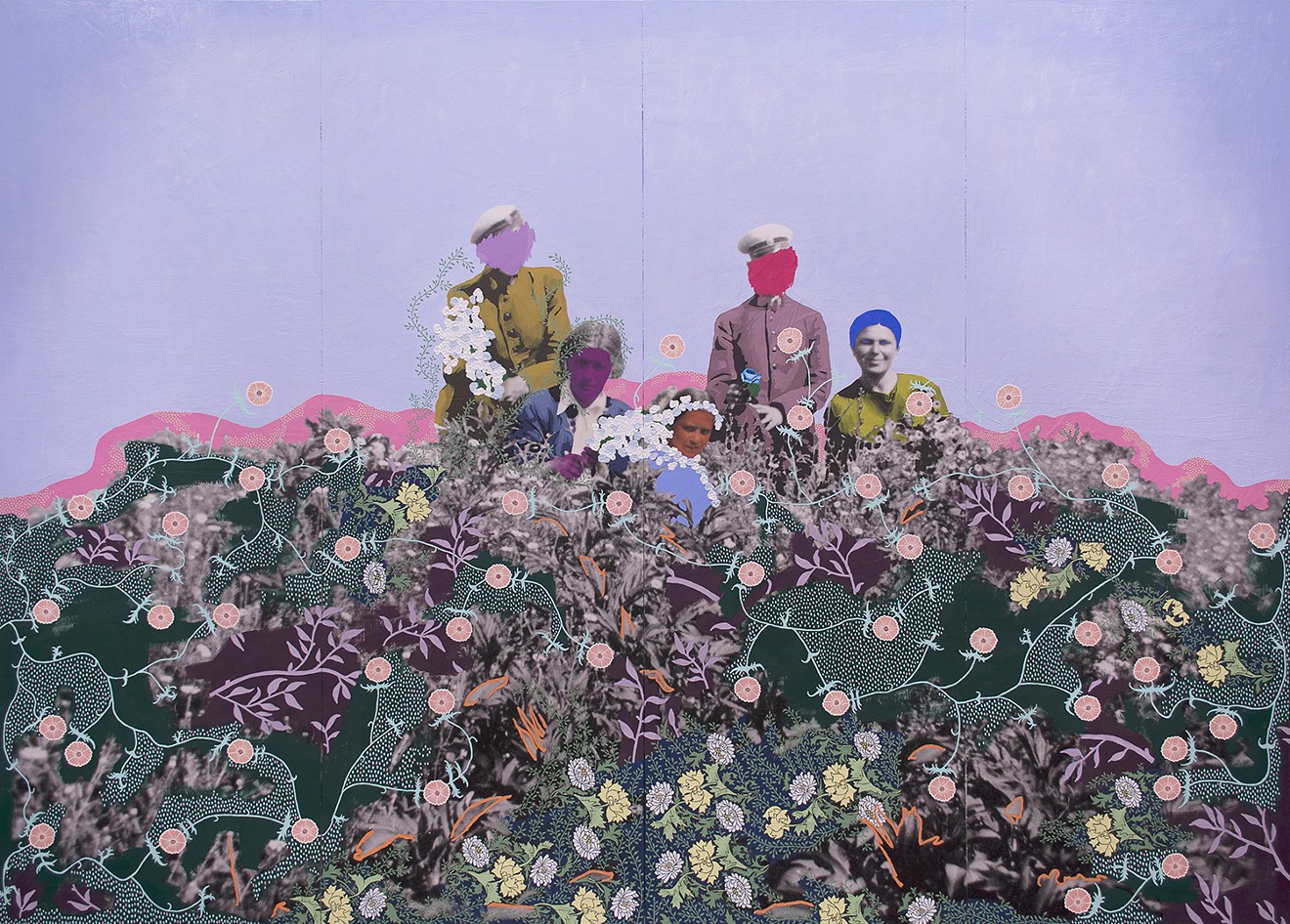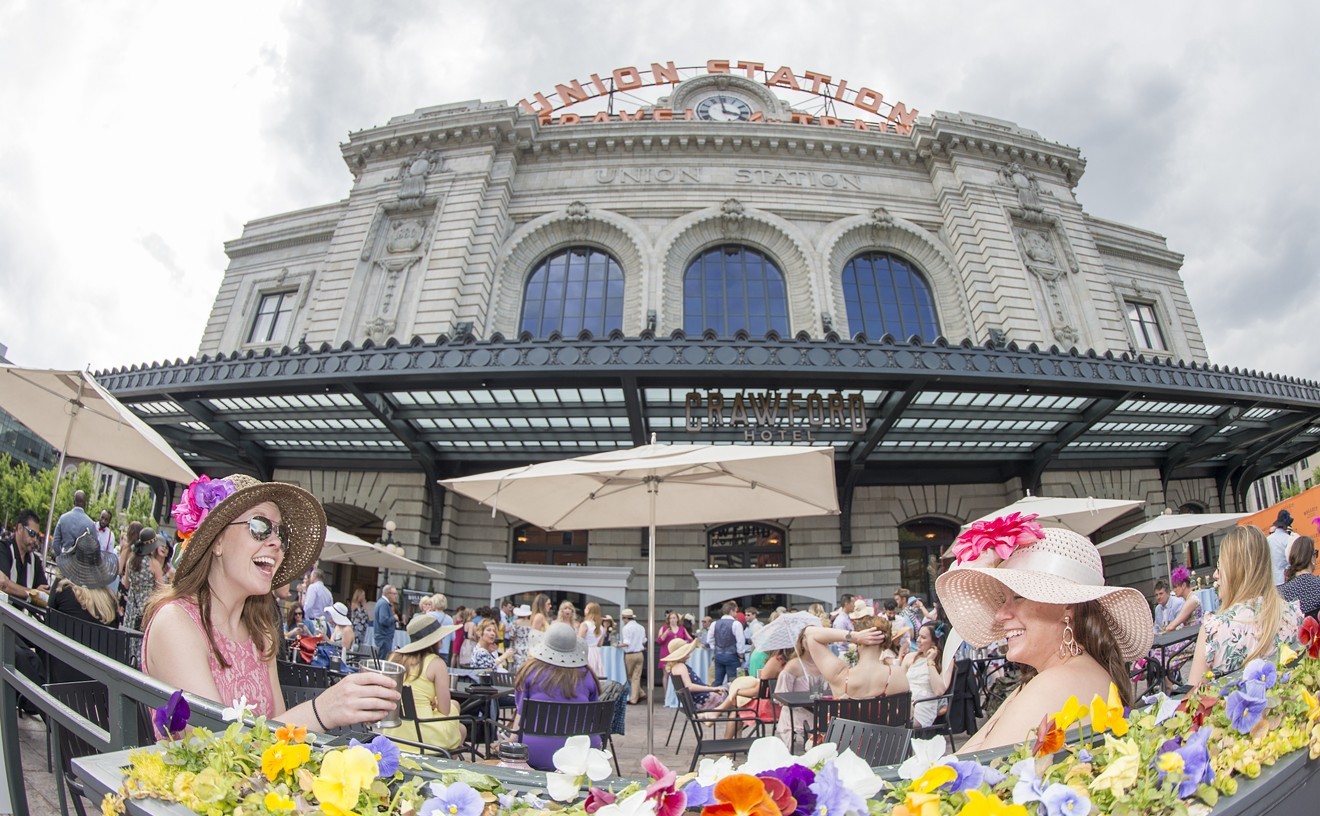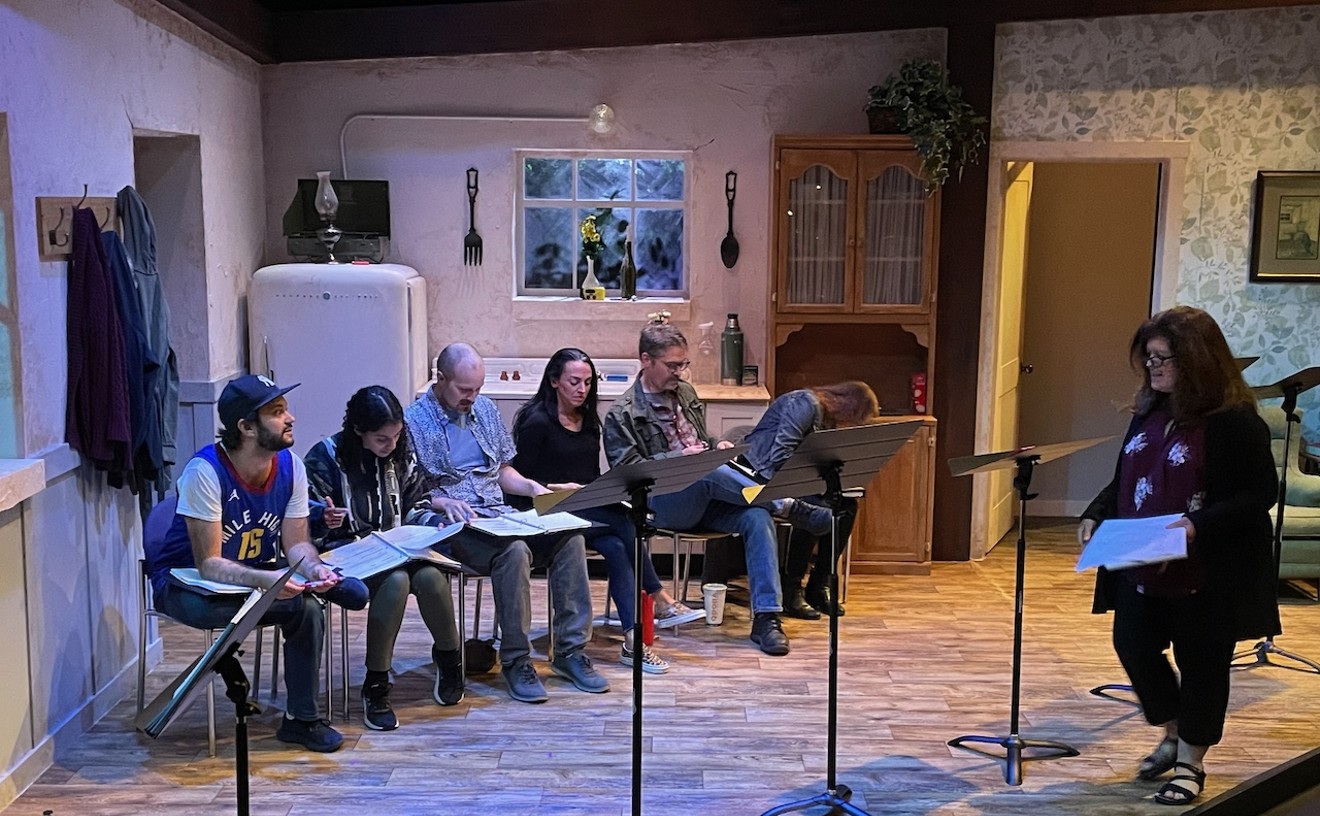Michael Warren Contemporary, one of the city’s top galleries, often presents two exhibits back to back, as is the case right now. The star attraction, Throw My Ashes Into the Sea: New Works by Daisy Patton, takes over the sprawling multi-part front space, while the gallery’s companion solo, Creative Destruction: New Works by Margaret Lawless, is installed in the more intimate gallery at the back.
For the past several years, Daisy Patton has been creating neo-pop-style paintings that are based on found photos — she calls them “abandoned." Patton searches the Internet — in particular, Ebay — for family photos and snapshots that are for sale, and she buys those that intrigue her. The photos have been entirely divorced from their history and context, and she, and often the seller, know nothing about the people depicted in them or anything else about them. So the people in the photos represent lost memories, giving Patton permission to give them new identities, so to speak. After receiving the photos, Patton scans them, has them printed out in inkjet as enlargements, and mounts them on panels. She then goes in and covers over parts of the photos with oil paints.
By volume, Patton’s eye-catching solo mostly comprises easel-sized altered head shots, but it is her mural-sized paintings, typically capturing groups of people self-consciously posing, that set the tone for the show. As you enter, you can’t help but be drawn to one of those, “Untitled (In a Meadow),” which pretty much covers the north wall. Running across four vertically oriented panels that have been lined up horizontally is the image of a small group of men and women in a meadow. The people are placed in the top half of the composition, and below and engulfing them are stylized flowers and vines that Patton has painted over the photographic depiction of the real flowers and vines that fill the actual meadow in the original photo. Even more monumental — and not just because it’s bigger, but because of its solemnity and the formality of the composition — is “Untitled (A Bulgarian Funeral).” Running across the bottom third is an open coffin with a man in it, bedecked with flowers. Behind him are a line of mourners facing the viewer. Patton has painted a leafy vine that separates the dead man from the others, and she’s evocatively added bare trees at the back, along with other details. It’s fabulous.
Though I am fairly confident that Patton has never seen the work of the late John Haeseler done in the 1980s and ’90s, since it has only rarely been shown since, I have long been struck by how conceptually similar her photo appropriations are to his.
Margaret Lawless also messes with photos and uses them as the basis for her pieces, but she does something completely different. Instead of looking for anonymous amateur photos like Patton does to serve as source materials, Lawless aims higher, using the famous photos of New York taken by Berenice Abbott in the 1930s when she was working for the Federal Art Project of the WPA. Lawless translates the Abbott imagery into layered paintings that incorporate collage.
In “Capital Structure,” Lawless uses an untitled Abbott from her “Changing New York” series, which depicts a close-up of riveted girders with the city view falling in behind them in the distance, both below and beyond. As highlighted in the title’s use of the word “capital,” Lawless has re-created the Abbott using torn-up and cut-out fragments of financial books and magazines. References to the economy come up again and again in the Lawless solo, as in “Public Good,” based on Abbott’s famous image of a pylon of the Manhattan Bridge, and in “Fixed Capital Formation,” depicting a substantial nineteenth-century building. This focus on the economy on the part of Lawless is another connection to the Abbott originals, as she was recording the effects of the Great Depression, which is why she was being paid by the Feds to take photos of New York in the first place.
The Patton and Lawless shows run through March 4 at Michael Warren Contemporary, 760 Santa Fe Drive. Call 303-635-6255 or go to michaelwarrencontemporary.com for hours and additional information.
[
{
"name": "Air - MediumRectangle - Inline Content - Mobile Display Size",
"component": "12017618",
"insertPoint": "2",
"requiredCountToDisplay": "2"
},{
"name": "Editor Picks",
"component": "17242653",
"insertPoint": "4",
"requiredCountToDisplay": "1"
},{
"name": "Inline Links",
"component": "18838239",
"insertPoint": "8th",
"startingPoint": 8,
"requiredCountToDisplay": "7",
"maxInsertions": 25
},{
"name": "Air - MediumRectangle - Combo - Inline Content",
"component": "17261320",
"insertPoint": "8th",
"startingPoint": 8,
"requiredCountToDisplay": "7",
"maxInsertions": 25
},{
"name": "Inline Links",
"component": "18838239",
"insertPoint": "8th",
"startingPoint": 12,
"requiredCountToDisplay": "11",
"maxInsertions": 25
},{
"name": "Air - Leaderboard Tower - Combo - Inline Content",
"component": "17261321",
"insertPoint": "8th",
"startingPoint": 12,
"requiredCountToDisplay": "11",
"maxInsertions": 25
}
]













